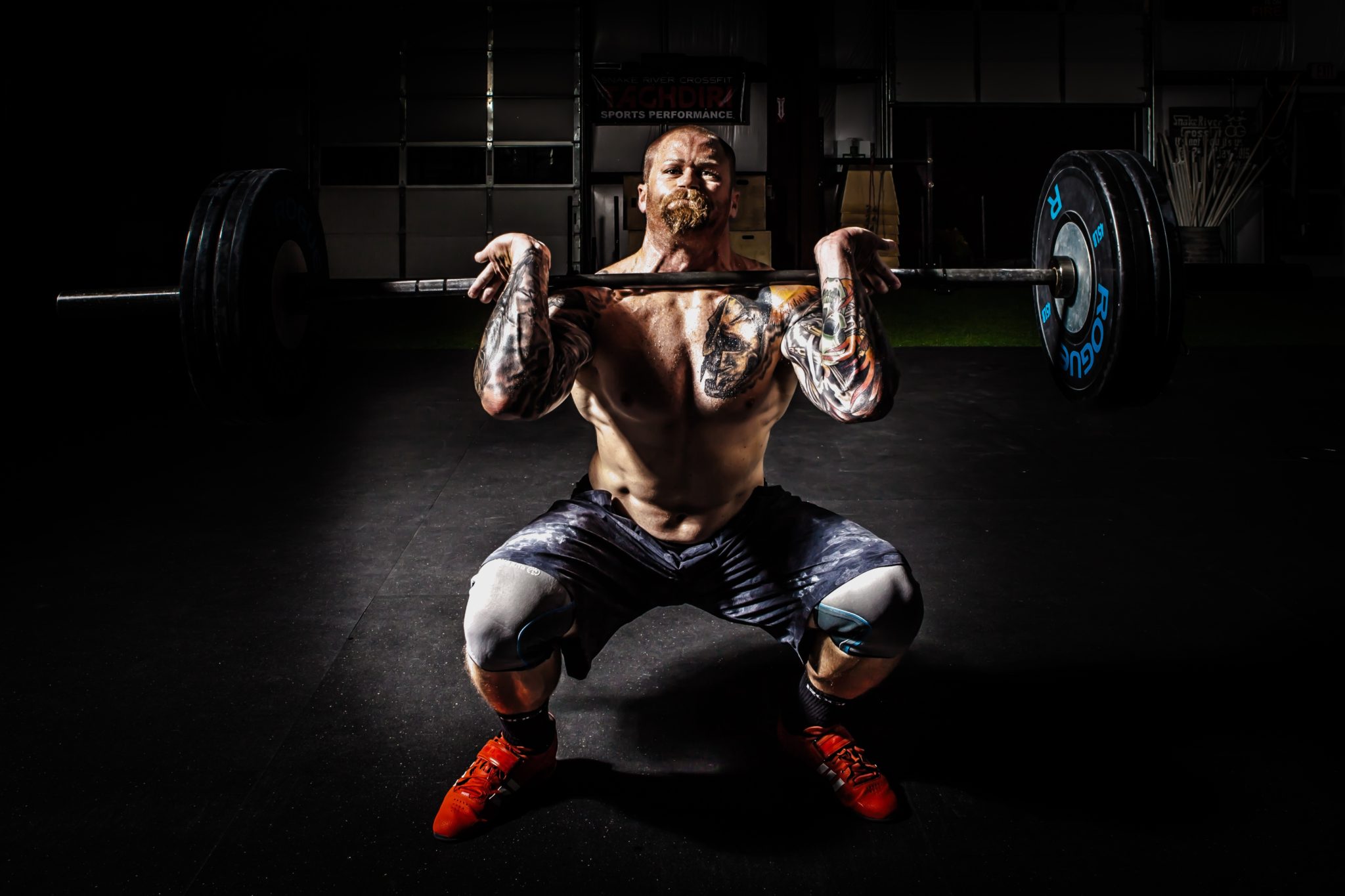Sweat, blood and tears. Puking in the nearest bin. You push your exercise intensity to the absolute limit, feel like you’re going to pass out if you perform another rep. And yet, you seem to be aware of other people in the gym with a better physique, getting better, faster results and they’re “not working as hard as you”.
What the hell is going on? I have encountered several people that have fallen into the “effort trap”, in which they continue to think that more is better. This quick article will make you aware where you may be going wrong and what you should today, right this second, to make sure you free yourself from this inevitable doom.
EXERCISE INTENSITY THRESHOLD
This is where the confusion arises. Exercise intensity is often an entirely misused term and people are unable to understand the concept due to the classic game of Chinese whispers that is the fitness industry. Intensity refers to the percentage of an individual’s maximal output (9) and can be measured objectively as a percentage of your 1RM, a percentage of VO2 max and so on. It’s all relative to your maximal performance.
that is the fitness industry. Intensity refers to the percentage of an individual’s maximal output (9) and can be measured objectively as a percentage of your 1RM, a percentage of VO2 max and so on. It’s all relative to your maximal performance.
NOT how hard you think you’re working. Let me reiterate. NOT how hard you think you’re working. Exercise intensity is an objective measure. If you don’t hit the required exercise intensity you need to, you fall short and your body will not adapt to the same capacity. End of story.
BE SMART WITH YOUR TRAINING
If you’re training so much, pushing yourself as hard as you can every single day then chances are you hit a chronic state of overtraining a long time ago. Now don’t get me wrong, you may even be able to continue to progress in this state, picking up the occasional injury along the way and feeling like death for most of the time. If you’re a highly ‘motivated’ individual, you will want to push through this stage and there’s probably nothing I can say to stop you when talking about injury. However, when it comes to progress…you’re only hindering yourself.
RPE AND MEASURING YOUR DIFFICULTY
Anyway, the RPE or “Rate of Perceived Exertion” Scale is a simple scale from 1-10 (1 = Easiest, 10 = Maximal Exertion/Effort). This is probably the best way to bridge the gap between perceived effort and the actual exercise intensity you’re working at. There is also a fair bit of research supporting the use of RPE as a reliable method of tracking progression and exercise intensity from footballers (3, 7) to your average gym goer (5). In addition, within the world of strength and conditioning, RPE is now being used to monitor training load (total volume of training) and found to be a potentially easy way  to work with large groups of swimmers and other athletes (8).
to work with large groups of swimmers and other athletes (8).
On top of that, RPE is becoming increasingly popular in the world of powerlifting, as a means of constructing programs based purely off the RPE you should be training at rather than the weight you should be lifting.
BENEFITS
-
Everyone is Different
No one is built the same and no one responds in the same way to training. When one person may be able to perform 3 repetitions at 90% 1RM, another may only be able to perform 1 repetition at the same relative exercise intensity.
-
Easy to track and simple to understand
Even young children are taught from a young age how to rate things on a scale of 1-10. Although it can be made a little more complicated, if you begin to base your programming entirely off this measure, using it to simply track your performance is as simple as it gets.
-
Inexpensive
There is literally no cost to ask yourself or your client/athlete how difficult something was out of 10. Unlike other methods of recording barbell velocity, movement time etc. it simply requires one question and one answer.
-
If you know your body, then you’re good to go

Research has shown that individuals with a “broad range of resistance training experience” could accurately estimate the “number of reps left in the tank” before hitting volitional failure (6). With RPE now being used to quantify the rating with the exact %1RM, this may be the next step in taking control of your own training!
-
Reliable, even for the inexperienced
Even if it’s not accurate for those who aren’t aware of what they need to be looking out for, it’s going to be repeatable and will be great at highlighting any potential differences if you have an “off” day (1, 4).
DRAWBACKS
-
You May not know your own Potential
Recent research has shown that self-selected resistance exercise intensity (i.e. choosing the weight based off how difficult it feels rather than the other way around), resulted in an exercise intensity lower than typical strength training recommendations (2). In addition, agreement between RPE exertion and estimated 1RM was poor (1). This point literally goes hand in hand with the idea of effort compared to exercise intensity. It may feel like you’re working hard enough, but unfortunately, your perception of what your body is capable of may be skewed!
-
Be Honest with Yourself
Requires you to be consistent in your view on your own strength. You may over/under-estimate your potential in any given workout. Peer Pressure will also play a role as well, if you’re with training partners you may rate your RPE at a lower score than it works.
APPLICATION AND SUMMARY
Even though the research has shown that it may not be incredibly accurate for people with limited experience, it is reliable. Meaning that if you track it from a session to session basis, you can notice if there are any times whereby the training feels much harder than usual. If so, you can evaluate what you did that day that may have made an impact.
Note it on your FitBit/Apple Watch (if you can), note it down on your phone, get a notepad I don’t care. Everyone is so obsessed with tracking their diet, tracking their bodyweight, but then find it “effort” when it comes to tracking a simple number out of 10 on how difficult their training was.
If you can think of any other drawbacks or have any questions, please leave a comment below!
REFERENCES
- Bove, A. M., Lynch, A. D., DePaul, S. M., Terhorst, L., Irrgang, J. J., & Fitzgerald, G. K. (2016). Test-Retest Reliability of Rating of Perceived Exertion and Agreement With 1-Repetition Maximum in Adults.journal of orthopaedic & sports physical therapy, 46(9), 768-774
- Cotter, J. A., Garver, M. J., Dinyer, T. K., Fairman, C. M., & Focht, B. C. (2017). Ratings of Perceived Exertion During Acute Resistance Exercise Performed at Imposed and Self-Selected Loads in Recreationally Trained Women.The Journal of Strength & Conditioning Research
- Day, M. L., Mcguigan, M. R., Brice, G., & Foster, C. (2004). Monitoring exercise intensity during resistance training using the session RPE scale.The Journal of Strength & Conditioning Research, 18(2), 353-358
- Foster, C., Florhaug, J. A., Franklin, J., Gottschall, L., Hrovatin, L. A., Parker, S., … & Dodge, C. (2001). A new approach to monitoring exercise training.The Journal of Strength & Conditioning Research, 15(1), 109-115
- Glass, S. C., Knowlton, R. G., & Becque, M. D. (1992). Accuracy of RPE from graded exercise to establish exercise training intensity.Medicine and science in sports and exercise, 24(11), 1303-1307
- Hackett, D. A., Cobley, S., Davies, T., Michael, S., & Halaki, M. (2017). Accuracy in estimating repetitions to failure during resistance exercise.The Journal of Strength & Conditioning Research
- Impellizzeri, F. M., Rampinini, E., Coutts, A. J., Sassi, A., & Marcora, S. M. (2004). Use of RPE-based training load in soccer.Medicine and science in sports and exercise, 36(6), 1042-1047
- Wallace, L., Coutts, A., Bell, J., Simpson, N., & Slattery, K. (2008). Using session-RPE to monitor training load in swimmers.Strength & Conditioning Journal, 30(6), 72-76
- Zatsiorsky, V. M., & Kraemer, W. J. (2006).Science and practice of strength training. Human Kinetics





